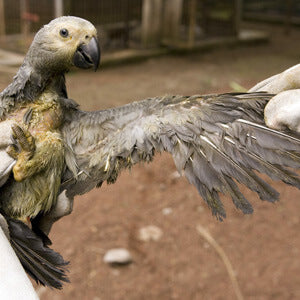Day 6
Three injured African grey parrots are being cared for in Cameroon|Three injured African grey parrots are being cared for in Cameroon
 Flight to freedom
Flight to freedom


Rescuing poached African gray parrots in Cameroon

need
Medical treatment and care for injured African grey parrots.|Medical treatment and care for injured African grey parrots.
activity
At the Limbe Wildlife Center, severely injured African grey parrots are housed, treated, and nursed back to health.|At the Limbe Wildlife Center, severely injured African grey parrots are housed, treated, and nursed back to health.
Measurable effort
Number of African grey parrots that can be released back into the wild.|Number of African grey parrots that can be released back into the wild.
Result
The population of African grey parrots living in Cameroon is maintained or even increased.|The population of African grey parrots living in Cameroon is maintained or even increased.
Systemic effect
The extinction of the African grey parrots, of which there are only 4,848 left in the wild in this region (as of 2013), is prevented.
background


The good deed
AboutCameroon|Cameroon
Yaoundé
Capital city
22 254 000
Population
1 405 USD
Gross domestic product per capita per year

Ranking 152 of 187|152
Human Development Index



